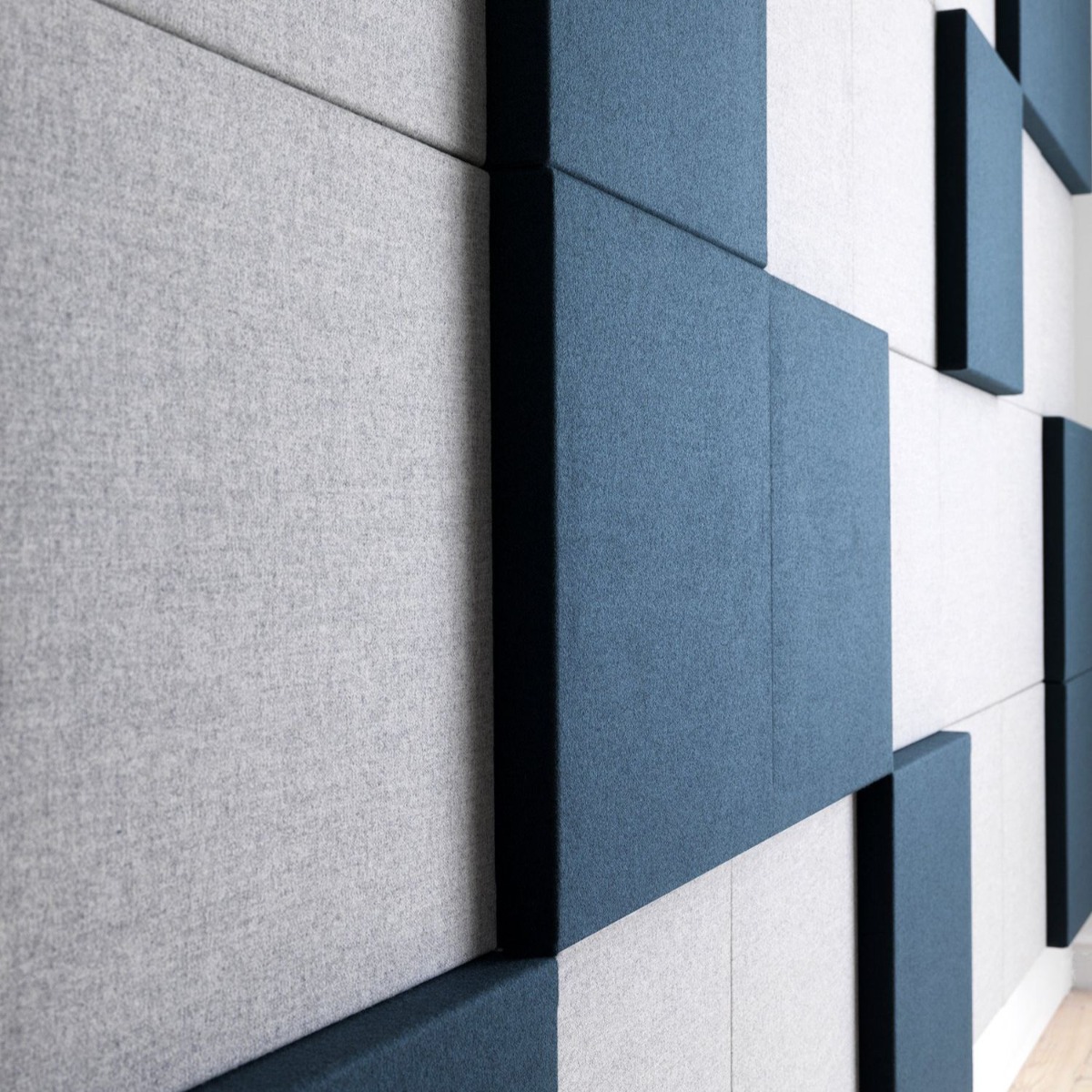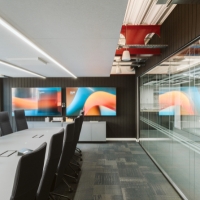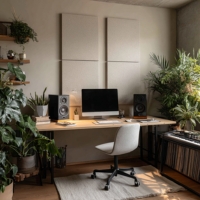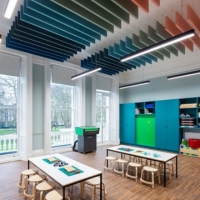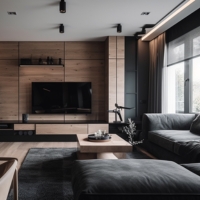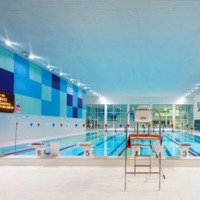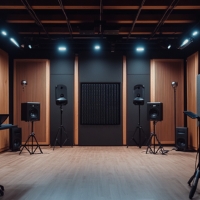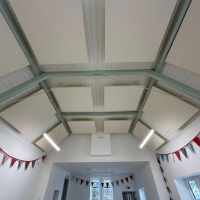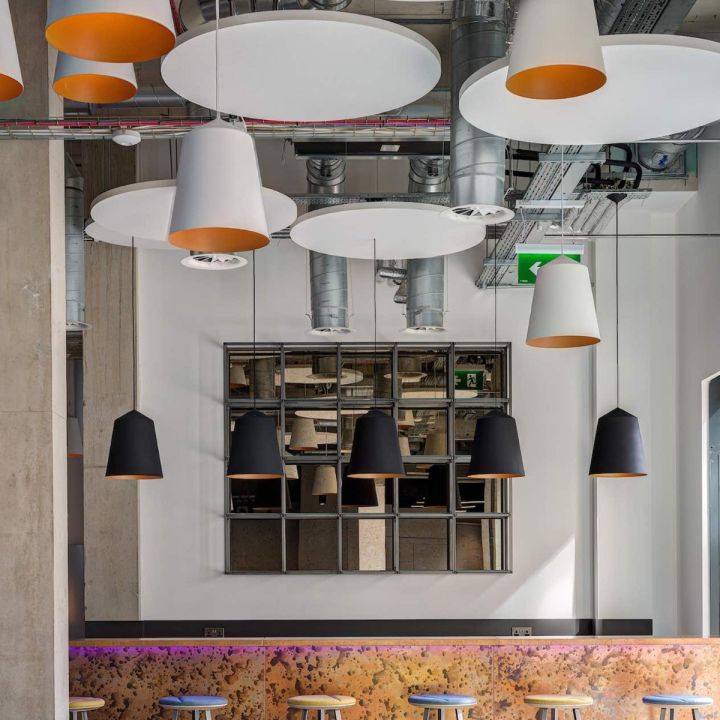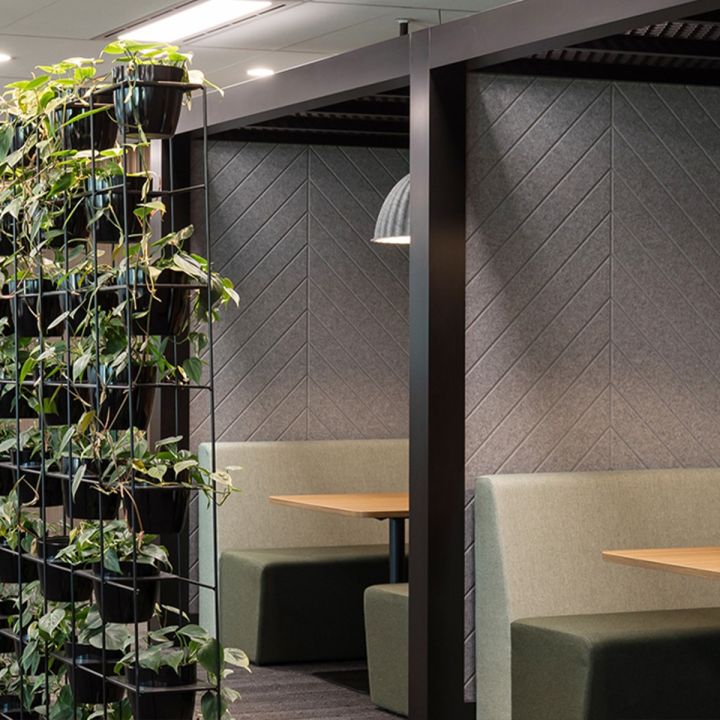
Only sustainable products
Configurable products
Installation available
Free acoustic advice
Top 5 Acoustic Treatments for Productive Modern Offices
In busy offices, managing noise is key for productivity and employee well-being. The constant sounds of talking, phones ringing, and equipment can really affect focus and work. Let's look at 5 acoustic treatments that can make your office quieter and more efficient, creating a place where people can work better.
Key Benefits of Acoustic Treatments in Offices
- Increased productivity: Up to 15% improvement
- Reduced stress levels: 62% of workers report less stress
- Better concentration: 79% find it easier to focus
- Enhanced communication: Clearer conversations in meetings
- Improved overall well-being: Creates a more comfortable work environment
1. Sound-Absorbing Ceiling Panels
Sound-absorbing ceiling panels are great for making offices quieter. They can cut noise by up to 50-60% when covering the ceiling. Acoustic ceiling panels catch sound waves and turn them into heat, which reduces echoes. This is really helpful in big, open offices where sound bounces off hard surfaces and creates a lot of noise.
These panels help by:
- Making the office much quieter overall
- Making it easier to hear during meetings
- Helping people concentrate better
- Reducing stress from constant background noise
- Possibly reducing headaches and tiredness caused by noise
Experts say covering 50-60% of your office ceiling with good sound absorbers works best. When choosing panels, look at the Noise Reduction Coefficient (NRC) rating. Panels with an NRC of 0.9 or higher are great for offices.
2. Acoustic Wall Panels
Acoustic wall panels absorb sound and can look nice too. You can get them in different sizes, shapes, and colors to match your office. They're really good for offices with high ceilings or where you can't put things on the ceiling.
Wall panels are good because they:
- Stop sound from bouncing off walls
- Make conversations more private in open offices
- Make the office more comfortable to work in
- Can be designed to look nice and inline with your existing branding or office design
- Can be moved around if you change your office layout
Put these panels in noisy areas, like near desks or in meeting rooms. Use both absorptive panels (which reduce noise) and diffusive panels (which spread sound out) to make the room sound better overall.
3. Sound Masking Systems

Sound masking systems add a low background noise to the office. This makes it harder to hear distracting conversations without making the office louder overall. They use special sounds that match the frequency of people talking.
Sound masking is good because it:
- Makes it harder to understand conversations from far away
- Helps people concentrate by reducing distractions
- Makes the office feel more balanced and less stressful
- Can be adjusted throughout the day
- Works well with other noise-reducing treatments
When setting up a sound masking system, you'll need to work with experts such as Resonics to get it right for your office. The goal is to create a soft background noise that you don't really notice. New systems can be set up differently in various parts of the office to match different noise levels.
4. Acoustic Room Dividers
Acoustic room dividers are movable walls that can split up open offices. They reduce noise between different areas and are great for offices that need to change their layout often.
Room dividers are useful because they:
- Create private areas in open spaces
- Can be moved around easily
- Can be used as pinboards or whiteboards
- Help create different zones for quiet work or team projects
- Are cheaper than building real walls
When choosing acoustic room dividers, look for ones that absorb sound well. The Sound Transmission Class (STC) rating tells you how well they block sound - higher is better. Use tall dividers for more quiet and shorter ones to keep the open feel while still reducing noise.
5. Acoustic Furniture
Acoustic furniture helps reduce noise while still being useful. Things like sound-absorbing chairs and desk dividers can make the office quieter without changing the whole room.
Acoustic furniture is a good option because it:
- Fits into your office without needing big changes
- Creates quiet spots in open areas
- Looks nice and helps with noise
- Can be moved around easily
- Comes in many styles to match your office
Try using acoustic furniture like high-backed sofas for quiet chats or phone booths for private calls. Desk screens can give people their own quiet space in open offices. When picking acoustic furniture, look for pieces made with good sound-absorbing materials.
Conclusion
Using these 5 acoustic treatments can make your office much quieter and better to work in. Combining ceiling panels, wall panels, sound masking, room dividers, and acoustic furniture tackles noise problems from all angles.
Remember, every office is different, so it's best to mix and match these solutions to fit your space. Think about your office layout, materials, and how people work to choose the right treatments.
For the best results, talk to acoustic experts. They can check your office and suggest the best plan. They'll help you make your office quiet and still look good.
By improving your office acoustics, you're making a place where people can work better and feel more comfortable. This can lead to happier employees, less stress, and maybe even fewer people leaving their jobs. In today's competitive work world, a quiet, well-designed office can really make your company stand out.
[related_products is_auto_added="1"] Acoustic Wall Panels
Acoustic Wall Panels 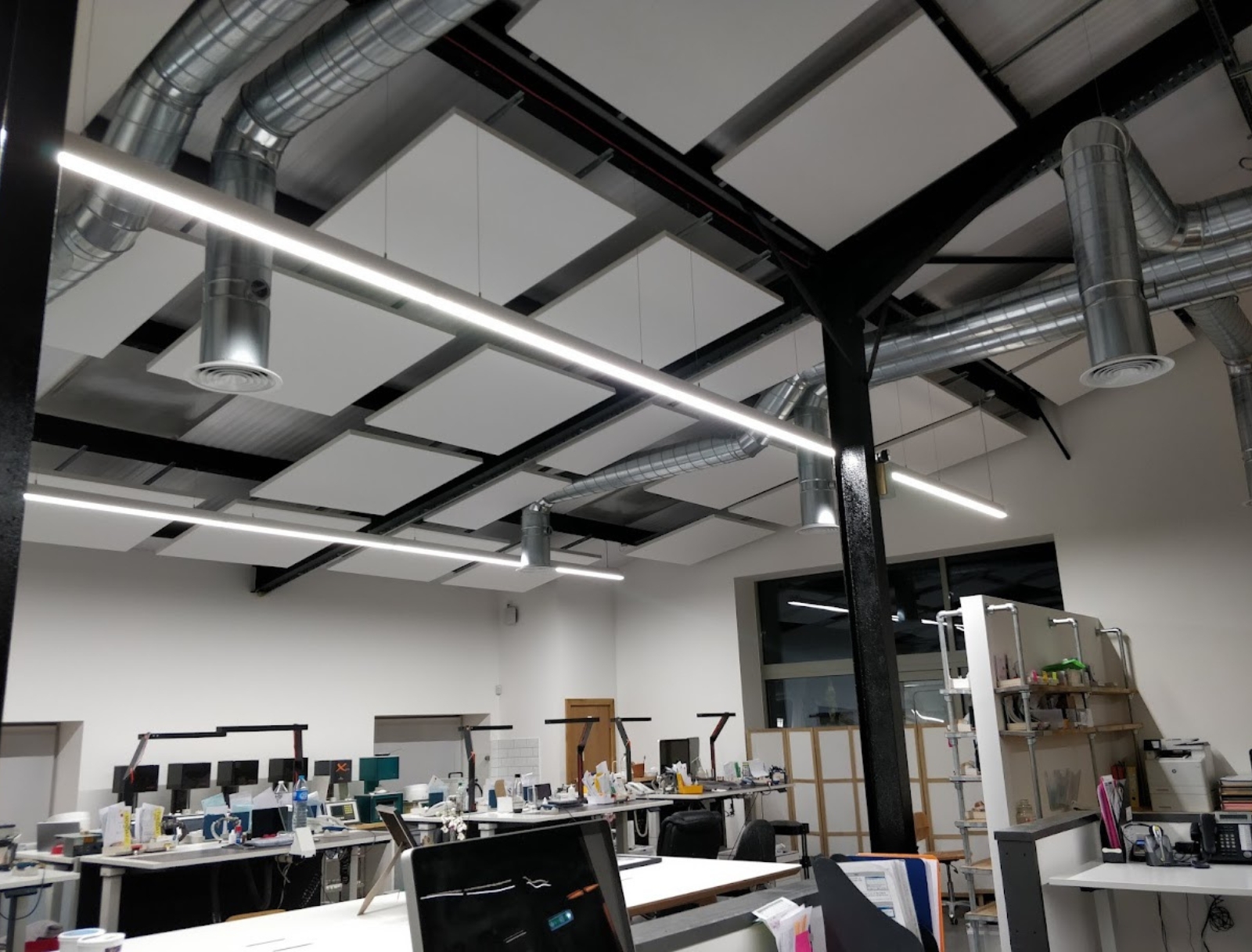 Acoustic Ceiling Panels
Acoustic Ceiling Panels 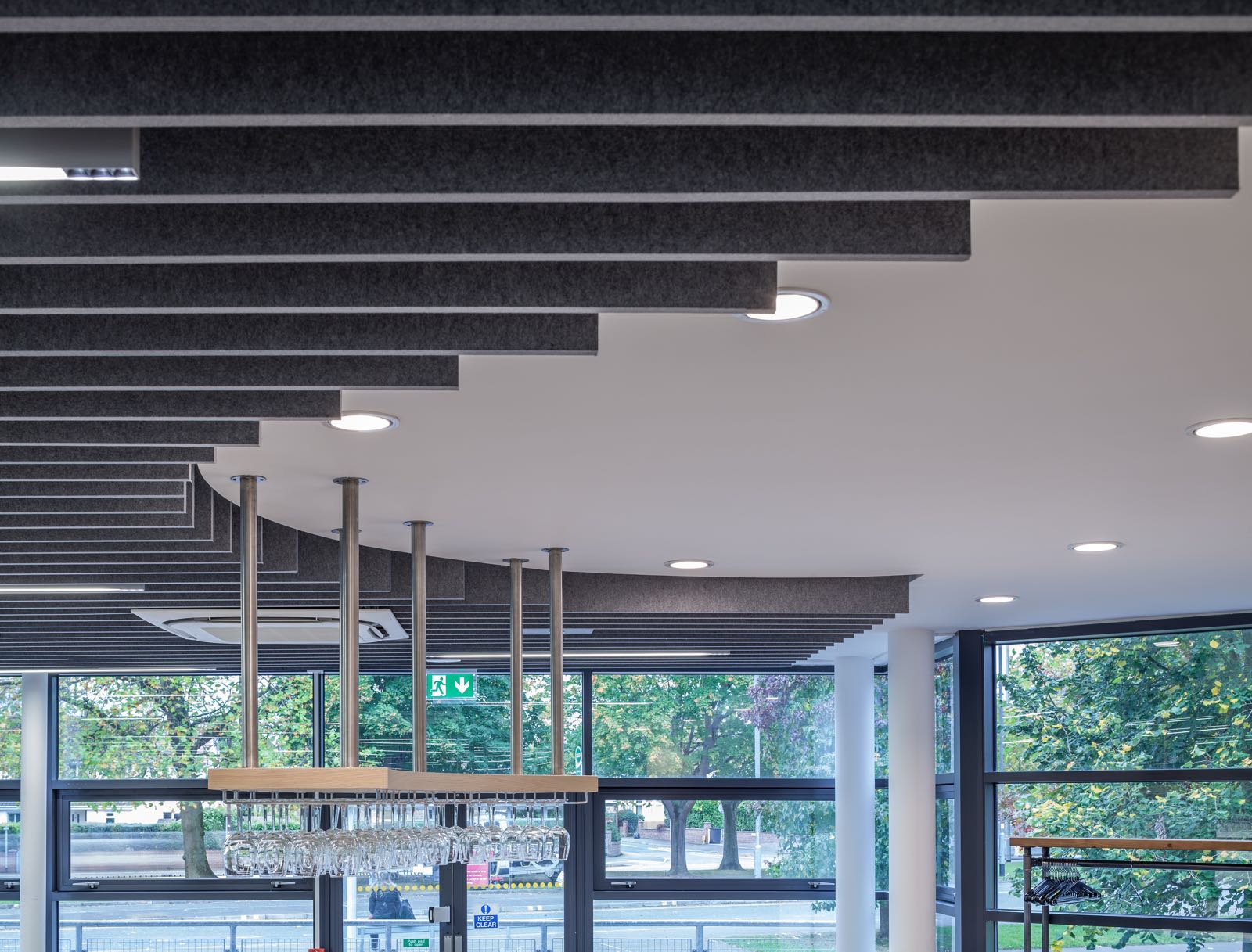 Acoustic Ceiling Baffles
Acoustic Ceiling Baffles 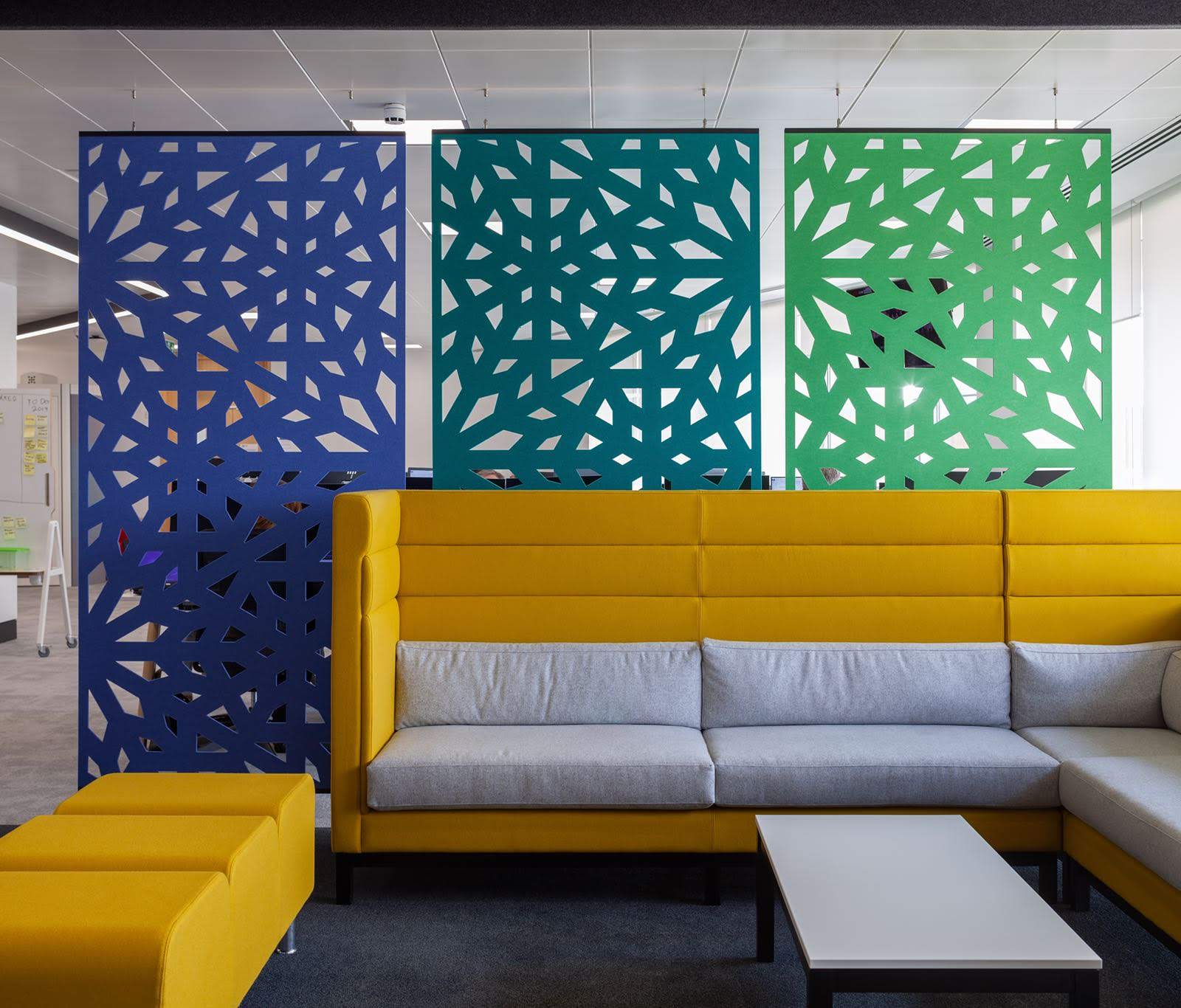 Acoustic Screens
Acoustic Screens 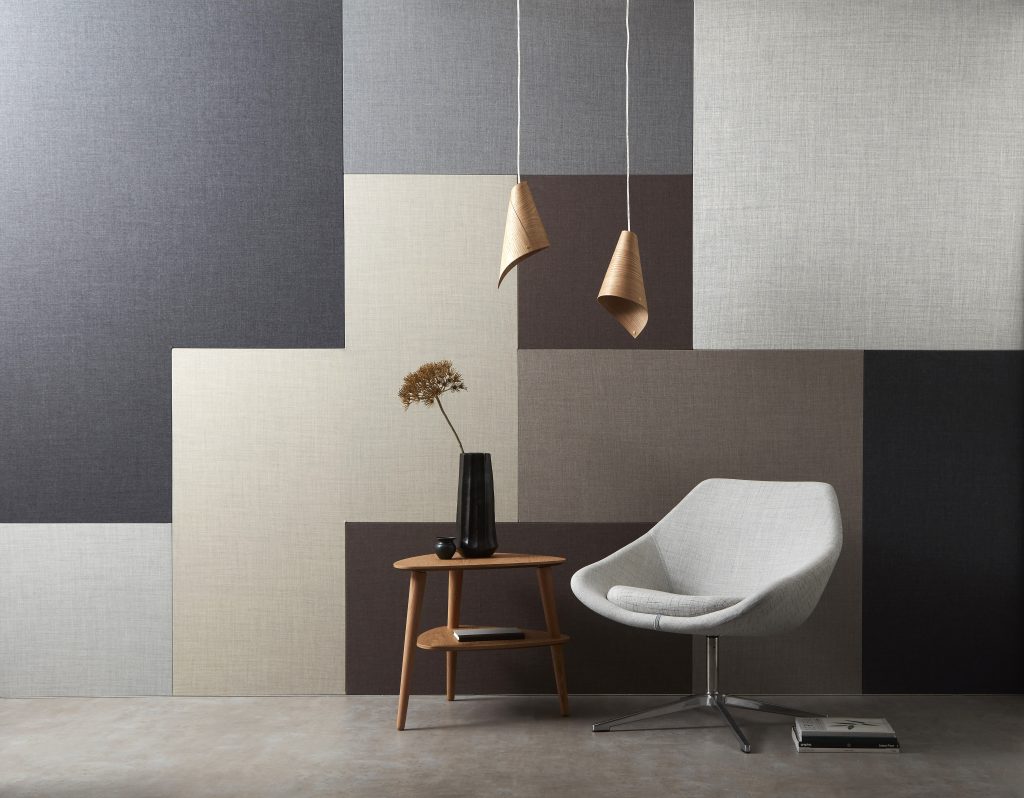 Acoustic Fabric
Acoustic Fabric  Acoustic Lighting
Acoustic Lighting 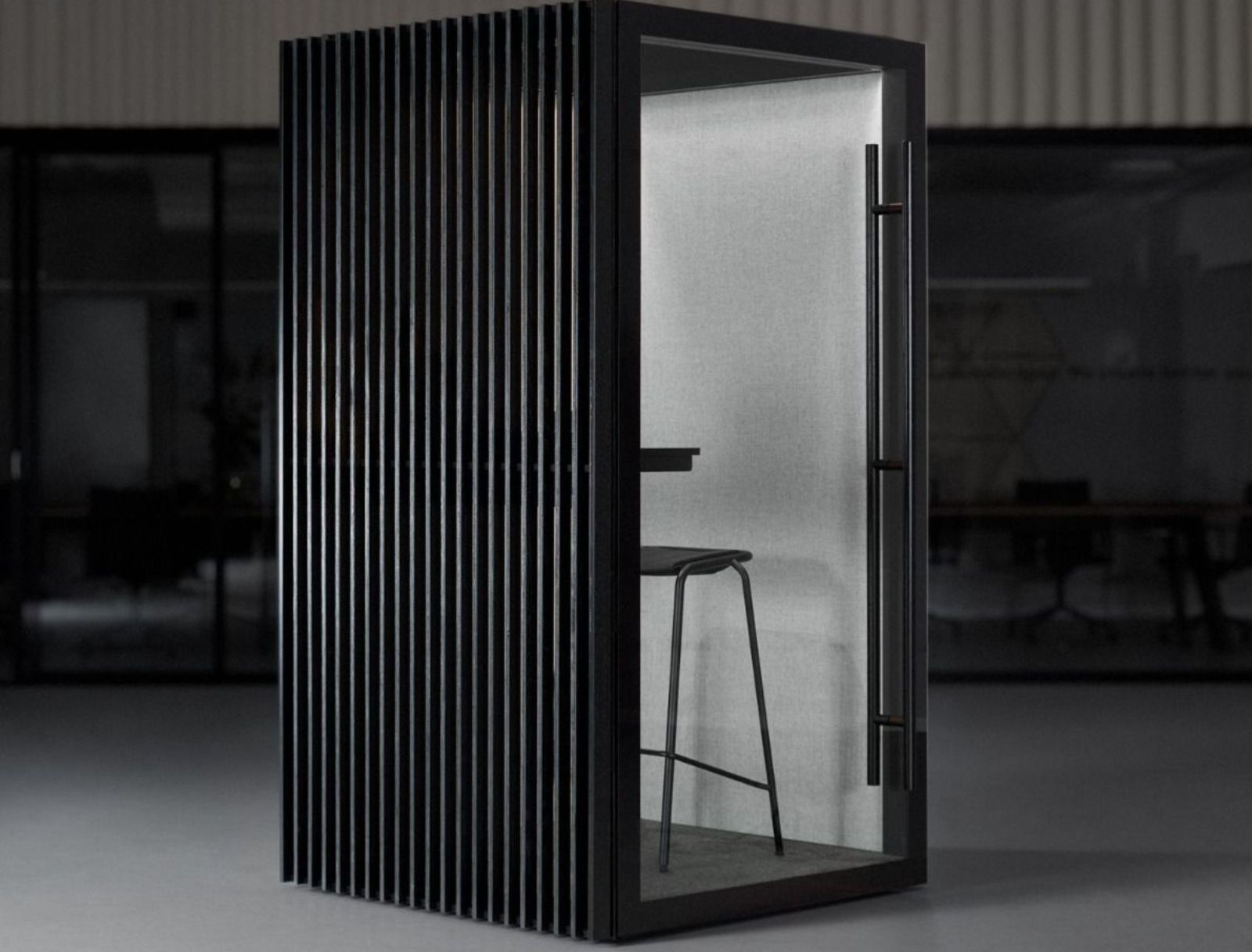 Acoustic Booths and Pods
Acoustic Booths and Pods 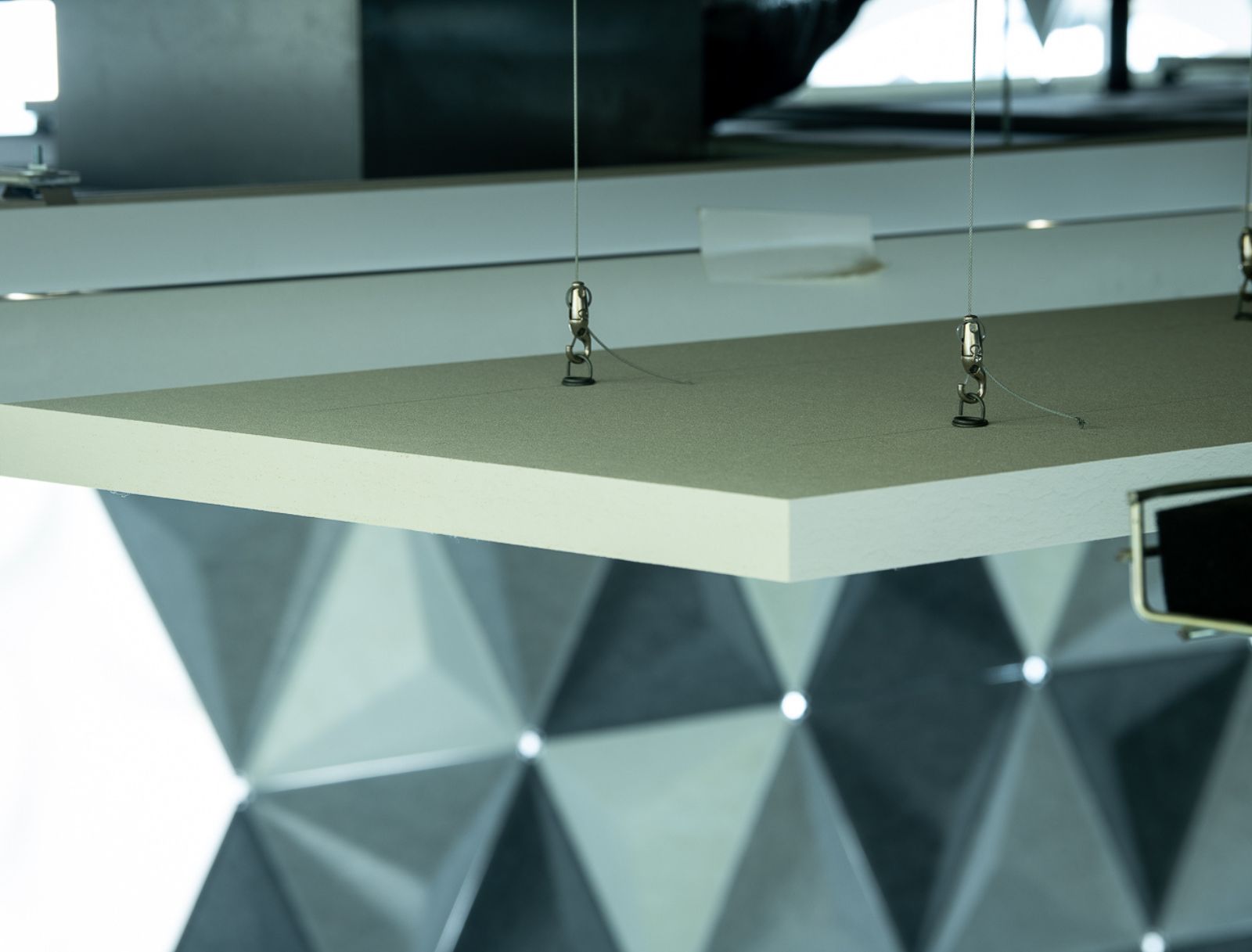 Acoustic Panel Accessories
Acoustic Panel Accessories 